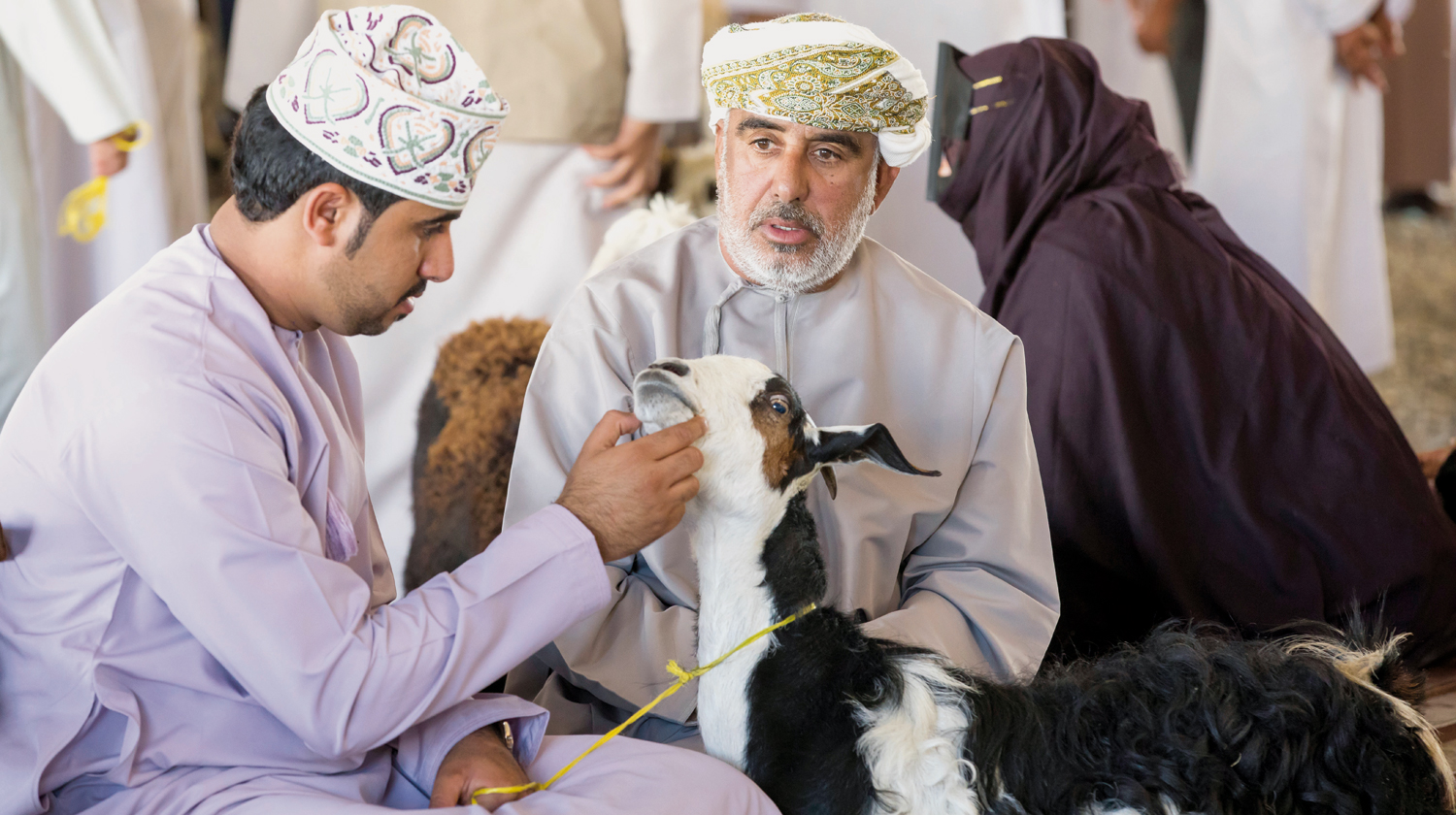

Muslims around the world celebrate Eid al Fitr, and each country has its own rituals. Oman, in the same vein, also has specific traditions and customs to celebrate this important holiday. Across the Sultanate, Omanis celebrate the holiday in almost the same manner — putting on new clothes, making sure that halwa is present at home, and ensuring that spices and nuts are restocked and for some, making sure that they have ‘alkasfa’ — usually made of palm fronds in which Shuwa meat is placed — are ready at home. In Rustaq, Eid al Fitr is a colourful and busy affair. Residents of Rustaq divide and conquer house chores to make sure that the celebration is a successful one.
Buying cows or sheeps at Al Habta markets are top priorities for men. These markets gather all necessities in one place making it easier to find what one needs to not only cook but decorate the house. People buy according to their desire and financial ability. To slaughter the bought cow or sheep on Eid and enjoy its delicious taste is something every family take great pride of. On the first day and after the dawn prayer, all family members, young and old, both male and female, wear new clothes. They would then sit down and enjoy a special meal called Alarsiaa (grounded rice and mix with meat and chicken) or to some harees or makbous instead of this popular cuisine. Men and women will have their separate special places to partake in the event.
At any time. older people will give young kids money. This will be followed by the performance of the Eid prayer held in specific mosques where all the state’s residents gather. After the prayer, some of the men will begin the ceremonial firing of guns to declare and express their joy after which the Alrazha begins, where people perform folk art as soon as they leave the mosque.
After saluting relatives and spending a nice time with them, everyone goes to slaughter cows or sheep. This activity strengthens the bond between brothers. The timing for this differs from one place to another. In some areas, this is held on the second day. The most difficult part of the day is usually cutting and distributing the meat as they have to be distributed properly to cover three main meals which are Maqli, Mashakeak and Shuwa. A portion of the meals is also given to the poor and needy.
There are lots of details that go into the meal preparations. In preparing the shuwa, people bring large, cut wood and set it on fire in a large pit or hole (locally known Tannour). Once the wood turns to coal, residents would encircle the tannour and after hearing the signal, would then throw the meat wrapped in tin foil and placed in a bag of palm fronds inside the pit. The tannour will then be covered with a piece of wood and buried in soil and at 8 am of the third day of Eid, everyone will be joyously awaiting the opening of the pit.
In Rustaq, folk arts is an important bringer of joy to the residents. As a form of entertainment, it allows everyone to relax and enjoy the celebration. After all the customs are done, many of the Omanis embark on recreation trips both in and outside of the Sultanate.
RUQAYA AL KINDI
Oman Observer is now on the WhatsApp channel. Click here



